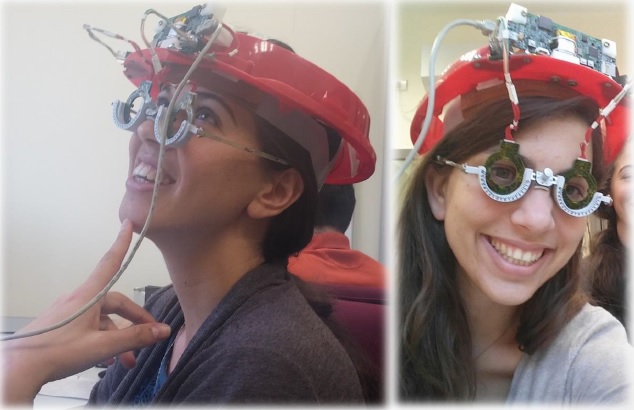The Eyelid motion monitor project's vision is to create a device that will allow doctors to diagnose medication effects and neurological diseases by characterizing the eyelid movement of a patient.

The Eyelid Motion Monitor (EMM) is a device developed at the High Speed Digital Systems Lab. It facilitates the monitoring of the upper eyelids motion, acquires the eyelid vertical movement and enables analysis and graphic presentation of the results. It should allow the patient to move freely in his/her natural environment. The primary purpose is to compute the relevant eyelid movement parameters and characterize the parameters for different groups of patients.
The clinical procedure consists of a doctor gluing tiny magnets on the patient’s upper eyelids, and then placing the device on the patient. While the doctor initiates the measurement, a short film is shown to the patient. During the 6 minutes screening, data is collected by the device. After the measurements are done, the doctor transfers the data to a computer, where the dedicated software analyzes the results and displays them on screen for the doctor’s review.
Our Project focuses on three main goals:
- Analysis of the output signal of the EMM device, and extraction of the relevant parameters.
- Explore the reliability of the measured parameters by comparing it to the visual data.
- Finding a correlation between the eyelid movement parameters, and compare them to the ones of a certain medical group.
In conclusion, the raw signal extracted by the device needs to be analyzed and interpreted as blinks, from which we may evaluate the desired parameters. The parameters need to be processed and associated with the matching medical group.
In our project we focused on the Blepharospasm disease. In order to test our algorithm, we measured and analyzed three groups of patients:
- Healthy patients
- Patients with Blepharospasm disease before treatment.
- Patients with Blepharospasm disease after treatment.

